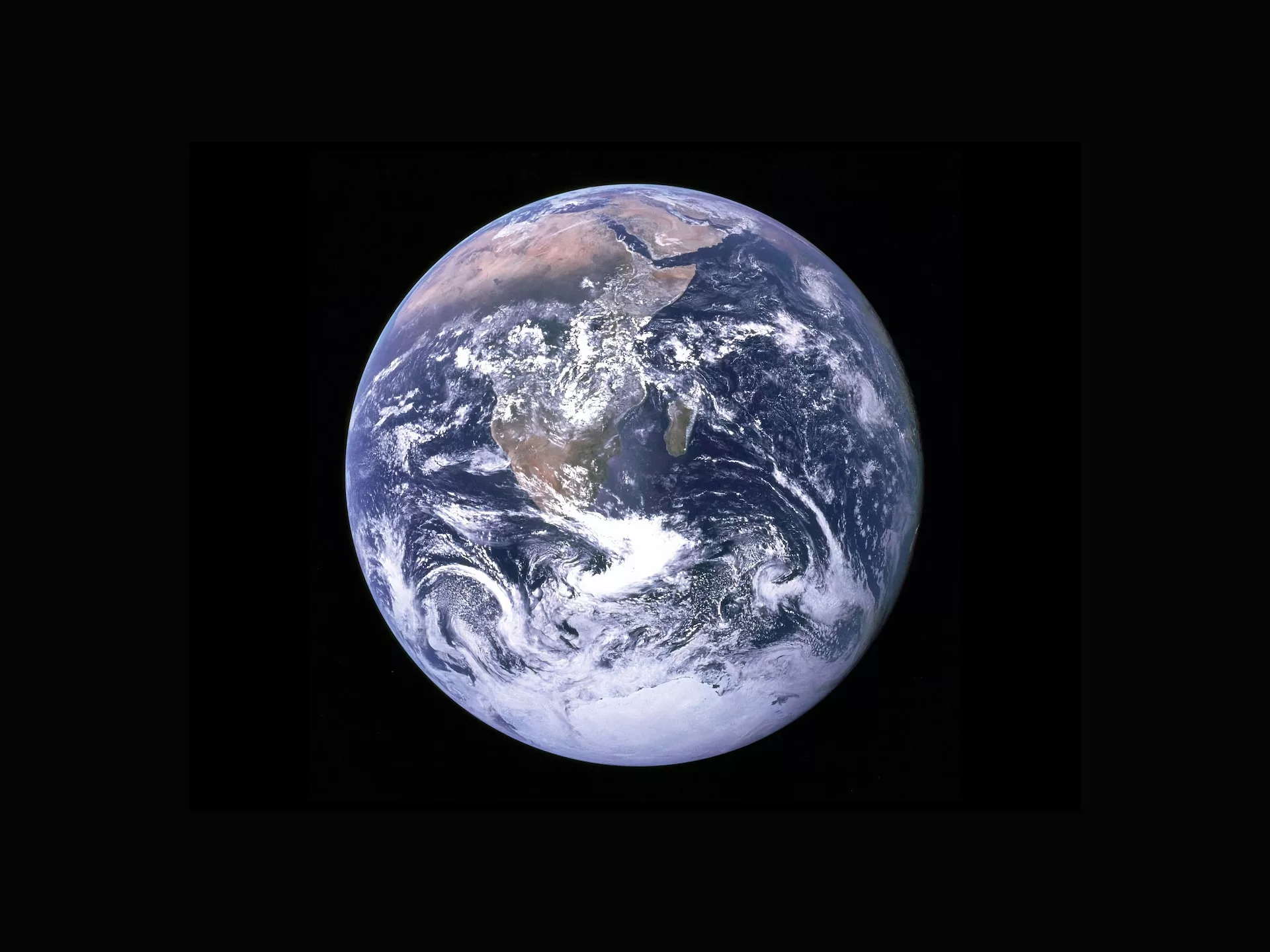The origin of life is perhaps one of the most disputed topics in science—how did such complex diversity evolve, when evolution necessitates complexity? Photo credit: NASA via Unsplash
3.7 billion years ago an impossible combination of unbelievably unlikely conditions aligned in one place, at one time. Chemistry and physics collided in a unique way and birthed their most prized child: Life. From this point on, Life wouldn’t stop blossoming—ecosystems, consciousness, society, and everything we know. It has grown to become, I would argue, the most complex thing in the known universe.
And yet, have you ever wondered where it, and we, came from? The enchanting story of our own existence is about the point of convergence between evolutionary biology and chemistry, with the universe seeming to be posing a fundamental dilemma to us. Asking us that very same question that we haven’t been able to escape since the days of skipping in the primary schoolyard: Which came first, the chicken or the egg?
But, before we get to the crux of the issue, we first need to have an understanding of what ‘Life’ is. Only then can we delve into where it came from.
Life is astonishingly complex
When tackling the difficult question of defining life, we often turn to descriptions of its characteristics instead – perhaps you learnt an acronym in school to remember them.
Similarly, Oparin, a 1900s Russian prebiotic biochemist, also chose to go for a description of its properties. He noted that living things grow, reproduce, move, respond to stimuli, and exchange materials with the environment (such as breathing, eating, and photosynthesising). Without getting bogged down by the definition (there is no easy answer) what this does highlight is life’s immense complexity.
To perform photosynthesis alone requires up to 100 proteins to be in the right place at the right time in the correct concentration and arrangements. But in reality, biology is much more complex than just the chemistry at its core. For example, to photosynthesise in a realistic environment, any vascular plant also needs to have the machinery to capture CO2, take up and transport water to the site of photosynthesis, and deal with errors and toxic by-products. It also needs to position the cells doing this job in sunlight. All of this requires an unimaginable (and still largely undiscovered) array of organic chemistry to form structures and processes.
This is just one of the things a plant does to survive and reproduce. Like you, they also need to sense, communicate, respire, and much more. When you look at anything living, you should see it as a machine vastly more elaborate than anything humans have ever made.
As a result of this observation, thinkers throughout time and all over the world have wondered: How did this wonderous complexity come about?
The complexity of life can only be the doing of evolution
In the 19th-century Western world, the question of how complex life emerged had a simple answer. A priest called William Paley summarised this perspective well. He compared the fine complexity and seemingly perfect design of organisms to a watch—a fine piece of complicated machinery puzzled together to fulfil a purpose. He proposed that the complexity of nature must only mean that, like a watch must have been made by a watchmaker, life must have been made by an intelligent designer.
But, with Darwinian selection and evolution, along with countless advancements in evolutionary biology, we can now see that the nature Paley deemed ‘too well designed to exist without a designer’ can actually arise perfectly naturally.
For example, in order to evolve an enzyme good at capturing CO2, a random mutation occurred 3.5 billion years ago that happened to cause an increase in binding to CO2 in that enzyme. This meant that these particular cells had an advantage over others. Over a few generations, this new fashionable design took over. Suddenly, if you repeat this process many times, you have an ocean full of algae with no need for any divine intervention along the way.
Evolution is an ingenious way to explain the complex nature around us, but it poses another question.
How did evolution begin?
Natural selection requires a few pre-existing biochemical cogs. Firstly, it needs a way to store information—a code. This code contains the information for the functional building blocks of life, like proteins, and can mutate to allow variation, so that natural selection can promote the best proteins. On Earth, the most common material used to store that code is DNA—it fulfils all of these requirements well. Secondly, this code needs to be inherited when the cell or organism multiplies by self-replication. This is an issue.
In order to carry out self-replication (involving the doubling of DNA, the cell membrane, and all other components), each cell needs hundreds, possibly thousands of proteins. Self-replication is an extremely complicated process.
If complexity is born from evolution, and evolution requires complexity, then what came first?
As we said before, complex systems like this are perfectly logical in the light of evolution. But this system is needed for evolution to start. Now the real issue has revealed itself. If complexity is born from evolution, and evolution requires complexity, then what came first? Our existence seems to be a Catch-22. The biochemical chicken or the evolutionary egg?
How did chemistry come to life?
This line of thinking implies that life had a history before evolution. To a normal biologist, that is a really odd sentence. In fact, some can’t disentangle life from evolution at all. NASA’s definition says loud and clear that life is ‘capable of undergoing Darwinian evolution’. The concept of life before evolution is clearly still a stumping conundrum, one which we call the ‘prebiotic’. So what do we think a prebiotic world might have looked like?
The well-known ‘prebiotic soup’ reflects the generally accepted idea that life must have started in a wet environment where dissolved chemistry could interact as it does in cells today. But where is that chemistry actually coming from? You might be surprised to learn that dust, comets, and meteors from space brought amino acids, membrane-forming compounds, and sugars (along with other organic compounds) to Earth. In addition, compounds like these form spontaneously on Earth too — such as at hydrothermal vents. Although this would produce only very low amounts, over billions of years this could build up to potentially give us the building blocks to kickstart life.
But it is not enough to just have the starting materials—you also need to maintain them. Any complex structures that you can make from these starting ingredients would rapidly decay due to something called entropy. Entropy is a physical concept stating that, over time, order turns to chaos. Put more simply: when you try and build big things out of small things, they tend to break apart back into small things. The same is true for your body, your house, and eventually the planet—if you fast forward far enough, things will fall apart.
The solution to this problem is self-replication. Self-replication allows these unstable structures, like cells, to persist after their own death. And, conveniently, it also sets the stage for evolution which, as we saw before, requires reproduction too! As a result of this ‘two birds with one stone’ solution, the most popular theory for the origin of life is the RNA world. That is because RNA has a code that can be influenced by natural selection, just like its cousin DNA, yet it can also perform chemical reactions, like proteins. This makes RNA a prime suspect on the hunt for a self-reproducing molecule; it may be able to catalyse the reproduction of its own code and renew itself. Unfortunately, despite its promise, many point out that RNA is too fragile to persist and too improbable to arise spontaneously without pre-existing architecture. There was probably something before it. And once again, it seems like we just keep begging the question…
The truth is, this is far from a complete story. We still don’t fully understand how the genetic code arose to begin with, how lipid cells came to be (let alone divide), or how the energy for life was first acquired. All of these questions have interesting suggestions, but the ongoing mystery is what makes them fascinating. The image of life before evolution is a tantalisingly fuzzy one: a grainy photo in which we can make out only just enough to see a strange, lurking secret.
The Beautiful Void
From where we stand now, Life seems illogical. It uses circular reasoning. The complexity we see requires evolution, yet evolution requires complexity — a chicken and an egg. At some point, there must have been something simple enough to not need evolution but complex enough to kickstart it. Nevertheless, for the time being, that almost paradoxical ‘something’ is still a void in our knowledge.
From where we stand now, Life seems illogical.
How can we reconcile with this blank page in our history book? Some people might like to write on that empty page with religious explanations, while others might be okay with allowing it to be blank. But one thing both have in common is an understanding that whatever occurred really was miraculous. That, on one perfect day, an unthinkably unlikely thing that never should have happened did happen. So, whether you believe that Life arose by design or by luck, it should make one thing undeniably clear: Life is a remarkable phenomenon that we should treasure, enjoy, and protect at all costs.





